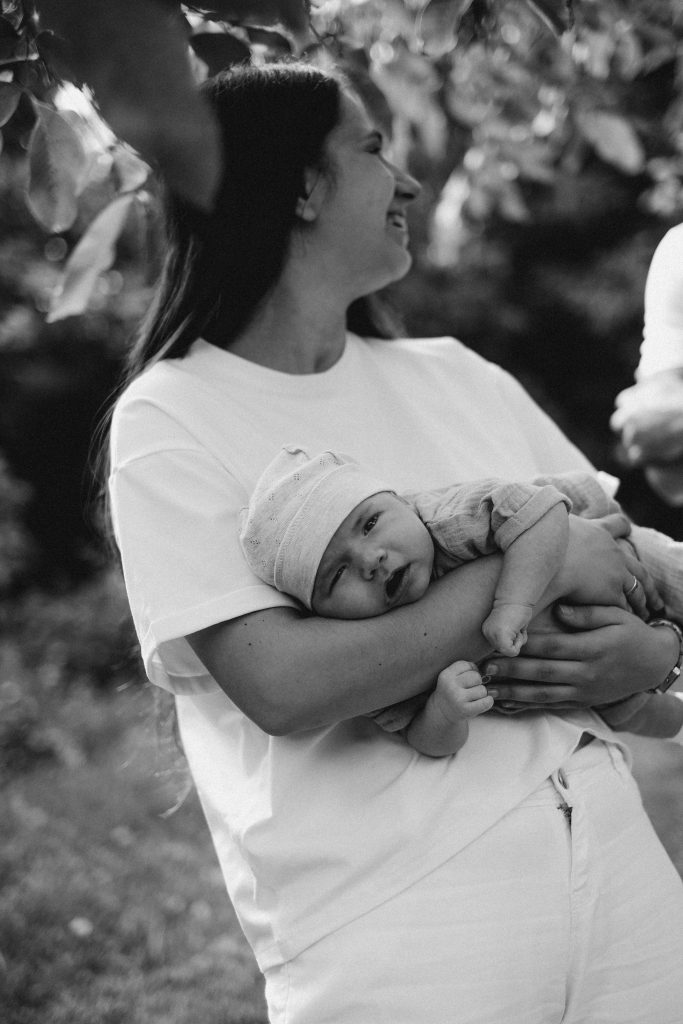Succession Planning Family Cabin
If you’re the proud owner of a cherished family cabin, you understand the sentimental value it holds and the memories it represents. However, have you ever considered what will happen to your beloved cabin when you’re no longer around? Succession planning for a family cabin is an essential step to ensure that future generations can continue enjoying the warmth and joy these cabins bring. In this article, we’ll explore the importance of succession planning for your family cabin, the legal considerations involved, and how a skilled business lawyer can guide you through the process seamlessly. So, let’s dive in and discover how to protect and preserve your family’s cherished getaway for years to come.

1. Understanding Succession Planning for Family Cabin
1.1 What is Succession Planning?
Succession planning refers to the process of determining how a family cabin or any other asset will be transferred to the next generation or future owners. It involves careful consideration of legal, financial, and interpersonal factors to ensure a smooth transition and the preservation of the cabin for future generations.
1.2 The Importance of Succession Planning
Succession planning for a family cabin is crucial for several reasons. Firstly, it allows you to protect the investment and ensure its longevity by putting a plan in place. By creating a roadmap for the transfer of ownership, you can minimize potential conflicts and maintain family unity.
Furthermore, succession planning provides clarity and certainty for all parties involved. It allows you to outline your intentions and legacy goals, ensuring that your wishes are carried out effectively. By addressing potential challenges and issues in advance, you can save your family members from unnecessary stress and disputes in the future.
1.3 Unique Considerations for Family Cabins
When it comes to succession planning for a family cabin, there are unique considerations to keep in mind. Unlike other assets, cabins often hold sentimental value and treasured memories. It is essential to consider how to ensure that the cabin continues to be a place of joy, togetherness, and relaxation for future generations.
Additionally, family dynamics and relationships play a significant role in succession planning for cabins. Balancing the interests and expectations of multiple family members can be challenging. Clear communication, collaboration, and conflict resolution strategies become crucial in creating a plan that satisfies everyone involved.
2. Exploring Legal Structures for Family Cabins
2.1 Sole Ownership
Sole ownership of a family cabin means that a single individual maintains full control and ownership rights. While this structure offers simplicity and decision-making autonomy, it may not be the most suitable option for family cabins. Sole ownership does not facilitate easy transfer to future generations and may create complications upon the owner’s passing.
2.2 Joint Tenancy with Right of Survivorship
Joint tenancy with right of survivorship involves multiple individuals owning the cabin together. In this structure, when one owner passes away, their share automatically transfers to the surviving owners. While this provides a streamlined transfer process, it may not be ideal if multiple family members are involved, as conflicts and disagreements may arise.
2.3 Tenants in Common
Tenants in common refers to multiple individuals owning shares of the cabin. Each owner has a specific percentage interest, and their share can be passed down through inheritance. This structure allows for more flexibility in terms of ownership percentages, but it also requires clear documentation and agreements to avoid conflicts.
2.4 Limited Liability Companies (LLCs)
Forming an LLC for the family cabin provides liability protection and allows for easier transfer of ownership. The cabin becomes an asset of the LLC, and ownership can be represented through membership interests. This structure allows for more flexibility in terms of management and transfer of ownership, bringing clarity and protection to the succession planning process.
2.5 Trusts
Creating a trust can be an effective way to transfer ownership of the family cabin. By placing the cabin in a trust, you can designate a trustee who will manage the property according to your instructions. Trusts provide flexibility, privacy, and potential tax benefits. They can be tailored to meet the unique needs and goals of your family cabin succession plan.
3. Identifying Key Stakeholders in Succession Planning
3.1 Immediate Family Members
Immediate family members, such as your spouse, children, and grandchildren, are often the primary stakeholders in the succession planning process. Their involvement and input are crucial in determining the future of the family cabin. Open and honest communication with immediate family members is essential to ensure their desires, expectations, and concerns are heard and addressed.
3.2 Extended Family Members
In many cases, extended family members, such as siblings, cousins, and in-laws, may also have an interest in the family cabin’s succession. Including them in the planning process can help maintain family harmony and prevent potential conflicts.
3.3 Non-Family Members
Depending on the circumstances, non-family members may also be stakeholders in the succession planning process. This could include close family friends or business partners who have a significant connection to the family cabin. Their involvement should be considered and addressed to ensure a comprehensive and inclusive plan.
4. Steps to Create a Successful Succession Plan
4.1 Communication and Collaboration
The first step in creating a successful succession plan for the family cabin is open and regular communication among all stakeholders. Regular family meetings or discussions provide an opportunity to share goals, concerns, and aspirations. Collaboration is key as you navigate the complex dynamics and emotions involved in passing down the cabin to future generations.
4.2 Determining Objectives and Priorities
With input from all stakeholders, it is crucial to determine the objectives and priorities for the family cabin’s succession plan. Considerations may include maintaining family unity, preserving the cabin’s legacy, balancing financial interests, and ensuring accessibility for future generations. Understanding these priorities will help guide the decision-making process throughout the planning stages.
4.3 Valuation of the Family Cabin
Obtaining a professional appraisal or valuation of the family cabin is essential for accurate financial planning. This valuation will help determine the fair market value of the cabin, which may be crucial for tax considerations and equitable distribution among stakeholders.
4.4 Legal Documentation and Estate Planning
Engaging an estate planning attorney is crucial to ensure that all legal documentation is prepared accurately and effectively. This includes drafting wills, trusts, and ownership agreements that align with the objectives and priorities outlined in the succession plan. Estate planning attorneys can provide guidance on minimizing tax implications and addressing potential legal complexities.
4.5 Regular Review and Updates
A successful succession plan is not a one-time event but an ongoing process. It is essential to review and update the plan regularly to reflect any changes in family dynamics, financial circumstances, or legal requirements. Regularly engaging with all stakeholders will ensure that the plan remains relevant and effective over time.

5. Addressing Conflict in Succession Planning
5.1 Mediation and Dispute Resolution Strategies
Conflict and disagreements are not uncommon when it comes to family cabin succession planning. Including mediation and dispute resolution strategies in the succession plan can help resolve conflicts and maintain family harmony. Mediators and conflict resolution specialists can guide and facilitate discussions to foster productive communication and find mutually agreeable solutions.
5.2 Establishing Clear Decision-Making Processes
Clearly defining decision-making processes within the succession plan is essential for preventing conflicts and ensuring a smooth transition. This includes outlining who has the authority to make decisions regarding the cabin, establishing voting procedures, and delineating mechanisms for dispute resolution. By setting clear expectations, you can minimize confusion and ensure the plan’s effectiveness.
5.3 Managing Expectations and Emotions
Emotions can run high when discussing family cabin succession. It is important to manage expectations and emotions effectively through compassionate and empathetic communication. Encouraging open dialogue, active listening, and respecting diverse perspectives can help reduce tension and facilitate a collaborative approach to succession planning.
6. Tax Considerations in Family Cabin Succession Planning
6.1 Gift and Estate Taxes
Transferring ownership of a family cabin may have gift and estate tax implications. Consulting with a tax advisor is crucial for understanding and navigating these potential tax liabilities. By considering gift and estate tax exemptions, leveraging gifting strategies, and exploring tax planning options, you can minimize tax burdens and protect the cabin’s financial viability.
6.2 Capital Gains Taxes
Capital gains taxes may be applicable when the family cabin is sold or transferred. Working with a tax advisor can help you assess the potential capital gains tax implications and explore strategies to minimize these taxes. Techniques such as stepped-up basis adjustments and qualified personal residence trust (QPRT) planning may be valuable tools in managing capital gains taxes effectively.
6.3 Proactive Tax Planning Strategies
Proactive tax planning is crucial in family cabin succession planning. By consulting with tax advisors who specialize in estate and gift tax planning, you can proactively address potential tax liabilities and employ strategies that optimize tax advantages. These strategies may include lifetime gifting, charitable trusts, and other legally permissible methods to mitigate tax burdens.
7. Ensuring Accessibility and Enjoyment for Future Generations
7.1 Maintenance and Upkeep Planning
Maintaining and preserving the family cabin is essential to ensure its accessibility and enjoyment for future generations. Developing a maintenance and upkeep plan as part of the succession plan helps allocate responsibilities and resources to maintain the cabin’s condition. This plan may include regular inspections, scheduled maintenance tasks, and budgeting considerations.
7.2 Shared Use Agreements
Shared use agreements outline how the family cabin will be utilized and shared among multiple owners. These agreements specify usage schedules, responsibilities, and rules to ensure fair and equitable access for all stakeholders. Shared use agreements can promote transparency and reduce the potential for conflicts regarding cabin usage and reservations.
7.3 Creating a Legacy Preservation Plan
Preserving the legacy of the family cabin involves capturing and sharing the history, stories, and traditions associated with the property. Documenting this information and developing a legacy preservation plan can help future generations understand the significance of the cabin and its place within the family’s history. This plan may include oral histories, photographs, and written documentation to pass down the cabin’s legacy to future owners.
8. Professional Resources for Succession Planning
8.1 Estate Planning Attorneys
Estate planning attorneys specialize in legal matters related to succession planning, asset protection, and estate administration. Engaging the services of a knowledgeable and experienced estate planning attorney can provide invaluable guidance and ensure that your family cabin succession plan aligns with legal requirements and maximizes your objectives.
8.2 Tax Advisors
Tax advisors with expertise in estate and gift tax planning can help navigate the complex tax considerations involved in family cabin succession planning. They can provide strategic advice on minimizing tax burdens, exploring appropriate tax planning strategies, and staying compliant with relevant tax laws and regulations.
8.3 Mediators and Conflict Resolution Specialists
Mediators and conflict resolution specialists play a vital role in helping families navigate conflicts and disagreements during the succession planning process. Their expertise in facilitating productive discussions and finding mutually agreeable solutions can be instrumental in preserving family harmony and ensuring the success of the succession plan.

9. Case Studies: Real-Life Examples of Successful Succession Planning
9.1 The Johnson Family: From Conflict to Cooperation
The Johnson family faced significant challenges when it came to succession planning for their beloved cabin. Initially, conflicting desires and a lack of communication created tension among family members. However, with the guidance of an estate planning attorney and a mediator, the family engaged in a series of facilitated discussions to clarify their goals, address concerns, and find common ground. By exploring legal structures and tax planning strategies, the Johnson family developed a comprehensive succession plan that satisfied all stakeholders and preserved the cabin’s legacy.
9.2 The Thompson Cousins: Preserving Family Unity
The Thompson cousins, a large and diverse group of owners of a family cabin, recognized the importance of maintaining family unity throughout the succession planning process. With the assistance of an estate planning attorney specializing in shared ownership structures, the Thompson cousins worked together to establish a limited liability company (LLC) to hold the cabin. This allowed for clear decision-making processes, shared use agreements, and a mechanism for resolving conflicts. By prioritizing open communication and inclusivity, the Thompson cousins created a succession plan that ensured the cabin’s accessibility and enjoyment for future generations.
10. Frequently Asked Questions
10.1 What is the role of a succession planning attorney?
A succession planning attorney specializes in helping individuals and families navigate the complexities of planning for the transfer of assets, such as the family cabin, to future generations. They provide legal expertise, guide decision-making processes, draft important legal documents, and ensure compliance with relevant laws and regulations. Their role is to help you create a comprehensive and effective succession plan tailored to your specific needs and goals.
10.2 Can a family cabin be transferred through a will?
Yes, a family cabin can be transferred through a will. However, relying solely on a will may not be the most efficient or effective way to transfer ownership. Wills go through the probate process, which can be time-consuming, costly, and subject to potential challenges and disputes. It is advisable to consult with an estate planning attorney to explore alternative legal structures, such as trusts or LLCs, that may provide greater flexibility and efficiency in transferring ownership.
10.3 How can a trust help with family cabin succession planning?
A trust can be an advantageous legal structure for family cabin succession planning. By creating a trust and transferring ownership of the cabin to the trust, you can designate a trustee to manage the property and ensure its smooth transition to future generations. Trusts offer flexibility in terms of distribution, tax planning opportunities, and privacy. They can also include specific instructions regarding cabin usage, maintenance, and shared use agreements.
10.4 Are there any tax advantages to succession planning?
Yes, there can be tax advantages to succession planning for a family cabin. By employing strategic tax planning techniques, such as lifetime gifting, limited liability companies (LLCs), or charitable trusts, you may be able to minimize gift and estate taxes, capital gains taxes, and other potential tax burdens. Consulting with tax advisors who specialize in estate and gift tax planning is essential to identify and leverage these tax advantages within the framework of your succession plan.
10.5 Is it possible to include multiple cabins in a single succession plan?
Yes, it is possible to include multiple cabins in a single succession plan. The suitability of this approach depends on the specific dynamics and objectives of the family. Sharing ownership structures, such as LLCs or trusts, can provide a comprehensive framework for managing and transferring multiple cabins. However, it is important to consider the unique characteristics and circumstances of each cabin to ensure that the succession plan adequately addresses their individual needs and requirements.



